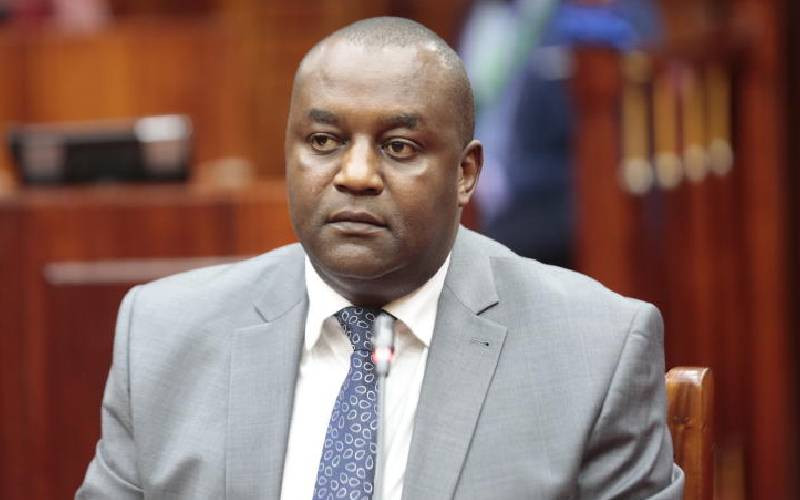By Waweru Mugo
Kenya: Last December, Kenyans woke up to news that in neighbouring Uganda, the Parliament had passed an anti-pornography Bill that would effectively ban women from wearing miniskirts.
Further, the BBC reported that the Bill outlawed sexually explicit material such as music videos or one from wearing material showing breasts, thighs, buttocks or any erotic behaviour intended to cause sexual excitement.
Shell shocked or thought our neighbours were crazy? No need to be or have such an illusion for the puritans have been around in our country since time immemorial.
Here, the small drapery has had mixed fortunes, suffering a partial ban here and there, and few of its embracers eliciting cat calls from passersby and even losing it altogether to thuggish moralists. It has even been labelled a western influence, even as we all know that for most of us, the traditional attire made a mockery of the mini.
Interesting though, we nearly outshone the Ugandan MPs when our own government almost pushed a similar ban shortly after independence. This would effectively have kept the most liked by some and often disgusting cloth to others off the fabric or mitumba stores.
In 1972, President Jomo Kenyatta hinted at banning the miniskirt. Speaking at a rally, Reuters reported, Kenyatta termed miniskirt wear as a wild habit that had fuelled prostitution! He urged parents to help kick out the miniskirt saying that “if this step will not yield fruit, I shall not hesitate to pass a ruling to this effect, so that foreigners who frequent our country may not leave with the notion that Kenya is a prospering market for prostitution.”
It was around the same time that female secretaries in government offices were banned from wearing the miniskirt while on duty — that they “should dress decently at all times”, the Associated Press (AP) reported.
Years earlier, Attorney General Charles Njonjo revealed he had intended to push for such a ban. He was quoted by the AP as telling a local newspaper in November 1967, “I once thought of introducing legislation to ban miniskirts…”
Ugly body parts
Njonjo termed the miniskirt as “human depravity” and ugly! He only slowed down on the ban cognisant that police would have a huge task, perhaps apprehending the many wearing the miniskirt, which was in vogue then. Very unkind to the skimpy skirt, he reportedly said, “I think the miniskirt fashion is ugly… it seems to accentuate the ugly parts of the body — from the knees downward.” But had the issue been raised at the Cabinet level, it certainly would have elicited mixed reactions. It was said that most likely, Commerce Minister Mwai Kibaki would have opposed it. Kibaki was more of a liberal when it came to fashion, and certainly did not mind the miniskirt exposing a woman’s legs!
The AP says Kibaki’s sole aversion was to boots, of which he would comment thus: “They never look right, even with a mini… they cover up the legs, and, after all, a man wants to see a woman’s legs.”
What is or not pornography and morally corrupt would haunt the Kenyan landscape as attempts were made to fight the so-called “foreign” cultural influence. Without any formal cultural policy, Kenyans keen to preserve the country as “African” opposed Western innovations such as miniskirts, historian Charles Hornsby notes in his must read text, Kenya: A History Since Independence. He cites the persistent attacks all the way to inside Parliament on beauty contests, wigs and eye shadow in the conviction they were “un-African”.
The verbal fight through the 1960s and 70s persisted into the 80s. Sometimes in the late 1988, the self-righteous National Guidance and Political Affairs ministry under James Njiru demanded the removal of the popular Drum and True Love magazines, ostensibly for publishing pornography.
Njiru, the Gemini News reported, said the glossy magazines “are particularly shocking in the portrayal of women in erotic poses and in the use of obscene, lewd and sexually provocative language”. In particular, Gemini went on, he took great exception to the publication of half-nude Swazi women performing the famous reed dance for their king.
Stay informed. Subscribe to our newsletter
As the news outlet observed, Kenya at the time adhered to western dress codes, with leaders now and then urging for the dropping of “backward” dressing manners. “Hotels and restaurants insist on ties and jackets after 7pm for dinners. Parliament also insists on ties and jackets for MPs, reports and visitors.”
It would therefore not come as a surprise a few years on when the Nakuru Chief Magistrate Rose Walekhwa ordered a police constable escorting prisoners to court locked up with them for not wearing a necktie.
And only a year ago, the Law Society of Kenya (LSK) revised its dress code for lawyers of the High Court, confining the miniskirt and other not so dignified wear off the courts premises. In its dressing edict, female lawyers must not wear sleeveless shirts and dresses while skirts must be at least knee length.
“Female lawyers should not wear revealing clothes,” LSK secretary general Apollo Mboya said.
The year before, girls at Rwathia Girls School in Murang’a caused consternation when they went on strike demanding shorter skirts. Indeed, the miniskirt incident had the Board of Governors at the Anglican-sponsored school expel four girls thought to have incited riots.
The then Education Minister Mutula Kilonzo joined the fray, and even as many parents vigorously protested at the unusual demand, The Standard reported, he suggested that students be allowed to dress in a “modern way”. Schools, he said, must not force girls to dress like nuns. “Why are you dressing them like nuns?.....These girls want to become Kenyan citizens not nuns,” he said sparking fury and placing himself on the firing line of the church, teachers and parents who termed his utterances reckless and shocking.
And so the debate rages on the cloth so popular with the preteens and teenagers.
 The Standard Group Plc is a
multi-media organization with investments in media platforms spanning newspaper
print operations, television, radio broadcasting, digital and online services. The
Standard Group is recognized as a leading multi-media house in Kenya with a key
influence in matters of national and international interest.
The Standard Group Plc is a
multi-media organization with investments in media platforms spanning newspaper
print operations, television, radio broadcasting, digital and online services. The
Standard Group is recognized as a leading multi-media house in Kenya with a key
influence in matters of national and international interest.
 The Standard Group Plc is a
multi-media organization with investments in media platforms spanning newspaper
print operations, television, radio broadcasting, digital and online services. The
Standard Group is recognized as a leading multi-media house in Kenya with a key
influence in matters of national and international interest.
The Standard Group Plc is a
multi-media organization with investments in media platforms spanning newspaper
print operations, television, radio broadcasting, digital and online services. The
Standard Group is recognized as a leading multi-media house in Kenya with a key
influence in matters of national and international interest.









